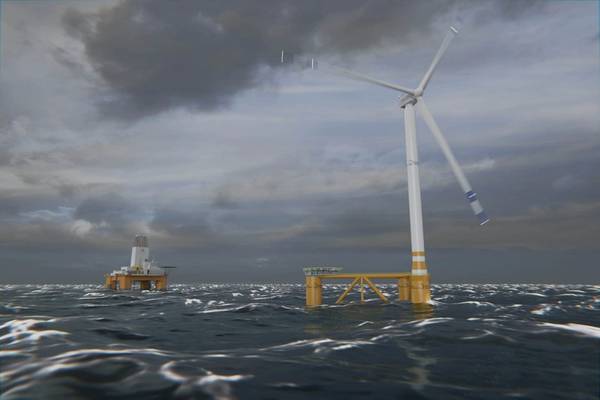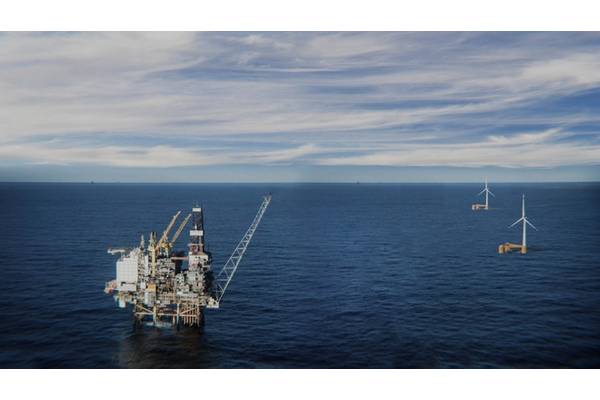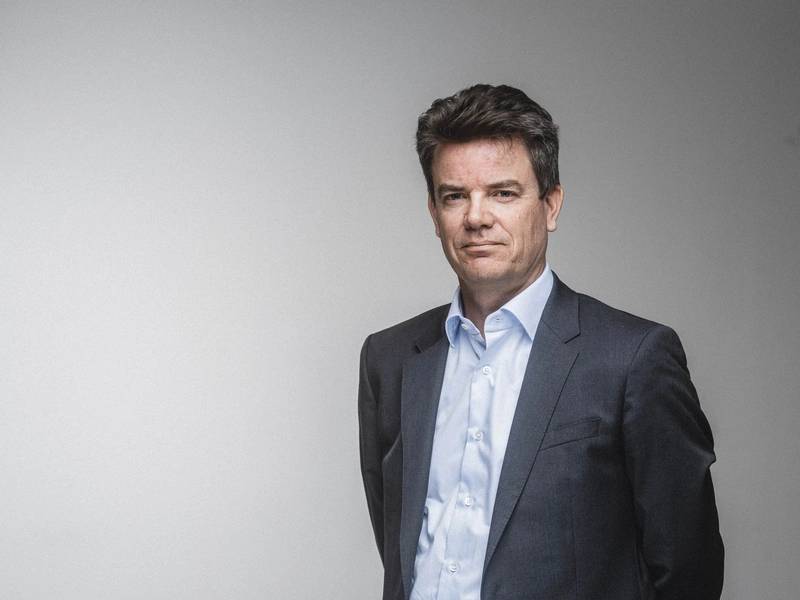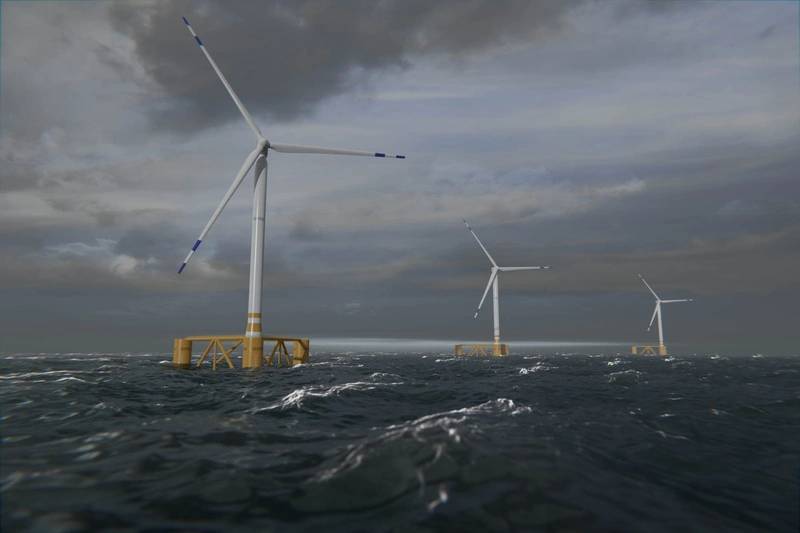

A look inside Odfjell Oceanwind, a Norwegian start-up that plans to decarbonize the offshore drilling industry by using giant floating wind turbines, mobile offshore wind units. Per Lund, CEO explains.
Per, to start, please give a ‘by the numbers’ look at Odfjell Oceanwind.
Oceanwind was started in 2019 by a group of founders with many years of experience in floating wind. The following year, Odfjell Drilling was invited to co-invest in the company and to develop global floating wind specialists. [The investment was made and the company name was changed to] Odfjell Oceanwind. Today we have our own proprietary product, the mobile offshore wind unit (MOWU), and we are developing the first projects aiming for deployment in 2024.
I know you’re still in the startup phase, but how big is the company today? And looking ahead, what’s your projection for the coming five to 10 years?
Today, we are about 40 people working in Odfjell Oceanwind to support the design of our mobile offshore wind units, which are based on a deep sea semi-floating wind foundation, while also setting up for the production line and preparing for operations.
To predict how this will look in five to 10 years is not easy in the market for floating wind. When you talk about permanent floating wind farms, it’s in an extremely rapid growth phase with new large projects and license plans being announced almost weekly. Our ambition is to become a global leading player in floating offshore wind, and where that will bring us in size is not easy to say. But personally, our first natural target is to become the largest company in the Odfjell Drilling Group.
How does your previous experience translate into your current role as CEO?
Being a naval architect by education and career, I’ve never been afraid to try new things. And I’ve always been intrigued by new market opportunities. I love a challenge, and I tend to grasp new technologies fast. In particular, my strengths lies in the crossroad between technology and business development. Seeing a market, seeing a technology and trying to pair the two to develop business.
 “The concept of a multi-location design that can be redeployed proves very attractive, and it’s kind of a circular economy approach, which is new to the oil and gas business.” Per Lund, CEO, Odfjell Oceanwind. Source: Odfjell Oceanwind
“The concept of a multi-location design that can be redeployed proves very attractive, and it’s kind of a circular economy approach, which is new to the oil and gas business.” Per Lund, CEO, Odfjell Oceanwind. Source: Odfjell Oceanwind
In a recent interview describing Odfjell Drilling’s capabilities and capital discipline, the CEO was quoted as saying “We’ve never built anything on speculation. Everything that we did was against contracts and income.” Is this the philosophy of Odfjell Oceanwind also?
The Odfjell family is an old ship owner family, very conscious about risk taking, certainly in the offshore drilling market. The renewable business with floating offshore wind, where we sell a commodity in power, electricity, will probably not fluctuate as much. So that may mean we’ll have some more appetite to take risk, but these are early days so we will balance risks and reward, continuing to build on everything we’ve learned in Odfjell Drilling. We know the importance of maintaining a good balance sheet.
Can you discuss the business plan for your future mobile offshore wind units?
Leasing is one of the business models, and with that model we will operate similar to our fleet of drilling rigs, but with longer contracts than we have for the drilling rigs since the mobilization cost will be relatively larger for these wind turbines compared to a drilling rig. There is also significant scope in connecting the power systems between the wind turbine and the consumer side.
But we are also offering our mobile offshore wind units for sale, where we continue to provide the operations and maintenance. In Norway, which is our primary market, the tax regime for oil and gas is very much in favor of the operating companies owning these units.
Recently, we have also been approached by wind farm developers with inquiries about our deepsea semi floating wind foundation, which is designed to be equally applicable for permanent wind farms in harsh environments. So in that respect, our business model also includes being a design house and a solutions provider, providing technology for wind farm development.
The lease model has proven to be quite attractive for many oil and gas operators [particularly when there is] uncertainty in regards to how long they will be able to keep the oil and gas assets producing.
So the whole concept of a multi-location design that can be redeployed proves very attractive, and it’s kind of a circular economy approach, which is new to the oil and gas business.
Can you share insights on proposed day rates?
At this stage we do not share day rates publicly; this is a very early market. We like to keep our cards close to chest, but just like in any other market, it needs to make financial sense for our clients. Most of our projects right now are for electrification of production platforms, not so much drilling rigs but production platforms where the oil company either will purchase or rent the MOWU for providing power to these installations.
 Meet the MOWU: Mobile Offshore Wind Units that are aiming to help the offshore drilling business decarbonize. Source: Odfjell Oceanwind
Meet the MOWU: Mobile Offshore Wind Units that are aiming to help the offshore drilling business decarbonize. Source: Odfjell Oceanwind
As I understand it, the first units are expected to be produced by 2024, part of this funded by Enova. Do you know how many MOWU’s will be built in the first batch? And are you still planning to secure contracts first?
The first units will be built towards contracts and we are planning two to five units for the first batch in ’24. And then we will gradually step up the production in our production line. So the initial units will all be built after we’ve secured contracts, but later, as the concept and the market is more proven, we will evaluate investing on speculation.
But again, we will have to apply our experience in risk taking from the drilling market. We are not speculative, but if we see that making investments can accelerate the market adoption, we will consider it.
I know we’re still relatively early, but can you discuss the expected cost to build the MOWUs?
At the moment we are keeping our cards close to our chest, but of course our ambition is to become cost leaders. Like others have said, we believe that the key success factors for driving down the cost will be scale, and also learning. This is why we think it’s so important to get started with production.
Can we take a little bit deeper dive into the technology itself and specifically your partnership with Siemens Gamesa and Siemens Energy? From what I understand, two versions are planned, among the world’s largest.
First of all, we have chosen a relatively conventional design for the floating wind foundation, our deep sea semi. This is the technology that we know very well through our 50 years as pioneers in offshore drilling.
On the turbine sites we like to go as large as possible because there’s economies of scale. Currently, 11 MW is the largest version commercially available from Siemens Gamesa for floating wind, but we will change to the 14 MW as soon as that becomes available in 2026. The deep sea semi foundation that we’re designing for the first batch is made to take the 14 MW turbine cells.
Staying on that same technology thread, can you explain what exactly WindGrid is?
WindGrid is a concept that we developed in order to provide uninterrupted power supply for off-grid applications. Today, our clients normally produce their power with gas turbine generators, and an efficient co-existence between the wind turbine generator and the gas turbine generator was important to release the potential in renewable wind power. The WindGrid provides sufficient stiffness to the power grid to maintain grid stability when we are running purely on wind power, and that enables us to stop the gas turbine generators in periods with sufficient wind power generation. And equally when the wind stops blowing, or if we have a failure on the wind turbine generator, we have sufficient energy stored to buy us time to start up the gas turbine generator again. The WindGrid enables efficient, cooperation between the gas turbine generator and the wind turbine generator, meaning we are able to increase the emission reductions from what you typically see if you purely connect the wind turbine generator to grid.
When we add the wind with module, we see that we can get it up to 60 to 70% reduced emissions or reduced fuel consumption.
Can you discuss the relationship at the moment with Odfjell Drilling?
The whole reason we chose to invest in OceanWind was that we already had the vision with Odfjell Drilling to be able to drill wells with zero emission, and having MOWUs was one way for us to get there. We have access to all the [Odfjell Drilling] experience, all the harsh environment, all the engineering expertise, when it comes to all facets of designing, owning, operating harsh environments, steel structures. So we can piggyback on all that learning.
What are the financial drivers to adopt this technology?
In Norway, the authorities have said that the companies that emit pay high CO2 taxation. The intention is to create a positive business case for making these investments. So in Norway, there is a financial framework for lifting these kind of investments. In the U.K., for example, they don’t have the same tradition for high emission fees. They do have the ETS quota system, but they don’t have a CO2 taxation. So this varies a bit (by geographic region). We are Norwegian, we like the Norwegian model, we see that it works.
Let’s look at your solution, the MOWU, the rigs in particular. What modifications are required aboard the rigs and platforms to make the MOWU connection?
That can be a bottleneck, so with our concept we tried to make it as simple as possible because we are going to be mobile; and you are not very mobile if it takes a fortune to establish the solution in each location.
First, we keep all the transformers on the MOWU itself, and we step down to the same voltage as the main switchboard voltage on the host installation in order to keep the modifications to a minimum. But obviously you will have to upgrade and modify your power management system to reflect this coexistence between the wind power generator and the gas turbine generators, but in general terms, we try to design the system and integration for minimum required modifications.
You recently signed an agreement with the Norwegian oil company OKEA to potentially power its giant Draugen platform using your MOWUs. Can you share more information on this?
We have built rigs for contracts, then the contract expires and what do you do if there’s no market? We wanted to counter that risk by having an agreement with an operating company, with an asset with a long time horizon, where we could move the units. They’re still producing power to a meaningful grid. So instead of putting them at the dock where you make no money, we have this flexible arrangement with OKEA and are looking to use Draugen as a more flexible storage area where we can take our units when they go from off contract, locating them there for a few years until we can bring them onto a new contract. That was important to keep up utilization of the units.
Sticking on that deal for a moment, we noted that it includes an interesting proposal for flexible storage location for your floaters. Can you explain how this works?
So for example, if we have a client that wants to deploy one of our MOWUs for a period of six, eight, 10 years, that means that we can offer to buy it back when the operating company has ended the production for that specific field. They will struggle to find new use for the MOWU in their own portfolio. With this flexible arrangement, we can offer to buy it back and deploy it to Draugen, and then we continue to produce electricity onto their grid. So that’s what we mean with the flexible storage. It’s like a parking lot for our MOWUs; still making money while parked.
 Source: Odfjell Oceanwind
Source: Odfjell Oceanwind